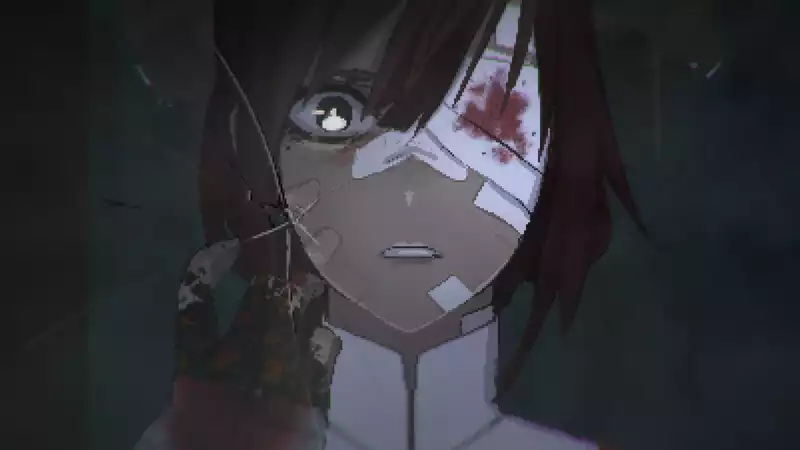It's hard to do horror well. Especially when it doesn't rely on cheap, sure-fire jump scares. That's why while the original "Silent Hill" trilogy is considered a classic, many of its sequels and imitations have been largely forgotten. Despite being the debut of Rose-Engine, a small, one-person indie studio, the sci-fi horror adventure "Signalis" stands as one of the best in the genre and one of my personal favorites in a year full of excitement, and this coveted It joins the pantheon of.
At first glance, "Signalis" is familiar and accessible to anyone who has played a classic-style survival horror game (down to the lo-fi PS1-inspired graphics). Playing from a bird's-eye view, you explore a maze of rooms, open many locked doors, weave together logical and abstract puzzles, and shoot various monsters to death. Inventory space is limited and so is recovery. The game can be saved in a safe room, where unused items can be hidden in storage bins.
Aesthetically, the game feels like a more refined version of the PlayStation classic. The backgrounds are pin-sharp, crisp pixel art, the characters are smoothly animated 3D models that are always crisp and legible despite their relatively small size, and the UI is similarly sharp despite emulating a retro high-tech aesthetic, with the map screen in particular being superb, approaching It automatically marks whether a door is locked, closed, or open. On the audio side, the game has Akira Yamaoka-esque industrial drones in quieter moments, chaotic and panicked noises during combat, and nostalgic tones, beeps, and warbling when navigating menus.
This is survival horror the old-fashioned way. Combat is tense and resources are limited, encouraging evasion and ammo conservation. The puzzles are cleverly designed and stall your progress long enough for you to savor a moment of eureka. The only unfamiliar mechanical element is the radio tuner. Found early in the game, it can listen to and decode radio signals. Sometimes the station broadcasts spooky numbers, sometimes it is an important clue to an item, and sometimes it is used in battle. They do not upend the game, but they are present enough to add a freshness to Signalis' familiar system.
Other elements are borrowed more directly from the "Resident Evil 1" remake, such as "panic item" slots to escape close combat and a limited supply of incendiary ammunition to burn corpses or permanently clear frequently traveled halls. While mechanically most similar to Resident Evil, the overall atmosphere is far closer to Silent Hill, the story of one engineer android named Elster who falls into a metaphorical (and potentially literal) hell in search of his missing co-pilot.
Although "Cygnaris" incorporates familiar sci-fi horror tropes (such as shooting distorted biomechanical creatures), the film is essentially a psychological horror film. It is a character-driven, emotionally charged story. It follows a potentially unreliable narrator in a deliberately fragmented, dreamlike downward spiral.
To go into too much detail would spoil the surprise, but Signalis avoids sudden flashy scares and prioritizes keeping the player constantly on edge, from persistent resource shortages to hard narrative curve balls. Enemies reappear in places once cleared, the game's perspective suddenly shifts from locked overhead to first person, and plot twists can have such heavy meaning that they overturn previous understandings.
Much of what makes Signaris work so well is its worldview. The main setting is an incredibly cursed mining facility on a remote planet, but there are dozens of diaries, records, and documents that paint a broader, more tragic picture. The universe of Cygnaris is a dark timeline of one alternate universe where most technology is stagnant at the level of the early 90s, but a strange new science has enabled the creation of sentient androids (known as replicas) and interstellar expansion.
It is under the banner of Usan that the cast struggles, and despite the sci-fi setting and the artificial constructs of many of the characters, their story is hauntingly human. They are ordinary people trying to lead ordinary lives while the cruel wheels of society threaten to smash them to pieces. It would be frightening enough if it weren't for the dark secrets lurking in the depths of distant planets and the pseudo-undead androids prowling the halls. With that, the dessert of despair is layered, motivating the actions of even the most desperate of characters.
If it were not for this depth, "Signalis" would never have reached its narrative landing point. The moment-to-moment storytelling is deliberately fragmented. The timeline is uncertain, Elster's goal is always to continue his search deep into the facility, but some elements are always ambiguous enough to invite interpretation. It is in these narrative gaps that a grounded worldview fits, and repeated replays in search of secrets or alternate endings increase the satisfaction of revisiting old scenes with new context.
One cannot talk about "Cygnaris" without mentioning its many inspirations. Familiar motifs are sprinkled throughout, from references to classic horror films like "King in Yellow" to heavyweight anime like "Ghost in the Shell" and "Evangelion. Famous paintings and haunting classical music make the game's setting both familiar and more surreal at the same time. There is enough of the real world here, framed strangely enough to feel like a dream.
Even after clearing the game twice, the only complaint I can make about Signalis is that inventory management is a bit cumbersome. While you can store an unlimited number of items in your save room stash, Elster can only carry six items. That's five if you carry a frequently used flashlight, and some puzzles require multiple spaces. Leaving healing items behind or carrying only one gun would alleviate some frustration, but one might be arbitrarily forced to return down a hostile corridor to store equipment.
Despite these drawbacks, "Signalis" is one of the best horror games I've played in years. It is tense, upsetting, and thought-provoking. It takes 100 familiar elements, inspirations, and references and weaves them into something completely new and thoroughly worthwhile.
.

Comments